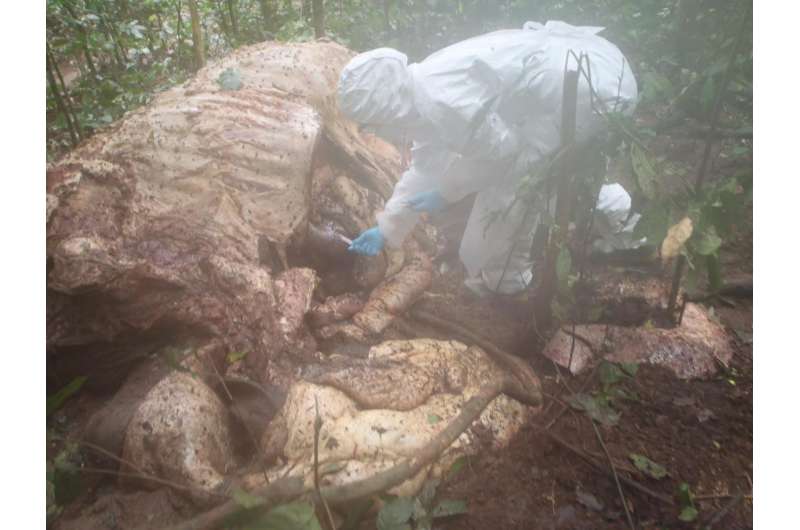A new pathogen in Africa causes anthrax-like disease in wild and domestic animals

Anthrax is caused by Bacillus anthracis, a pathogen that causes potentially fatal disease in most mammals, including humans. A study published in PLOS Neglected Tropical Diseases reports that a related bacillus with distinct genetic and biological characteristics causes anthrax-like disease in chimps, gorillas, elephants, and goats from four different African countries. Increased surveillance for this pathogen is needed to evaluate its impact on animal and human health.
Bacillus anthracis and its two close relatives, Bacillus thuringiensis and Bacillus cereus, are spore-forming bacteria naturally found in soil throughout much of the world. Their ability to cause disease depends on so-called virulence factors, some of which are encoded on plasmids (smaller parts of genetic material that can relatively easily be exchanged between bacteria) rather than the single chromosome. B. anthracis contains two such plasmids called pXO1 and pXO2, and both are required for full virulence.
Fabian Leendertz, from the Robert Koch Institute in Berlin, Germany, and colleagues, had previously described an unusual B. cereus bacterium isolated from a sick chimpanzee in Ivory Coast. This isolate possessed both the pXO1 and pXO2 'anthrax' plasmids, but its chromosome was closely related to B. cereus and not to B. anthracis. Because the bacterium appeared to have evolved from a B. cereus strain independently from the classic B. anthracis strains and established a B. anthracis lifestyle, the researchers called it 'B. cereus biovar (bv) anthracis'.
In the current study, they describe the origin and detailed molecular analysis of four additional B. cereus bv anthracis isolates. The bacteria were isolated from a goat, gorillas, a chimpanzee, and an elephant in Cameroon, the Central African Republic, and the Democratic Republic of Congo. All animals were sick or dead. Like the chimpanzee isolate from Ivory Coast, the new isolates shared the two virulence plasmids pXO1 and pXO2 with B. anthracis but chromosomal features with B. cereus.
More detailed analysis of their genomes suggested that the B. cereus bv anthracis isolates form a 'clade', which means they share a common ancestor. B. anthracis isolates, on the other hand, have a different ancestor and belong to a different clade. All B. cereus bv anthracis isolates possessed the same mutation in the regulator gene plcR, different from the one found in B. anthracis, and carry an intact copy of a gene mutated in B. anthracis, which enables them to produce a second outer shell composed of hyaluronic acid.
While closely related, the individual B. cereus bv anthracis isolates also differed amongst each other, for example in their ability to move in liquid medium and their resistance or sensitivity to penicillin, suggesting that this clade has existed and evolved for a while.
Their findings, the researchers say, "show the existence of a discrete clade of the B. cereus group capable of causing anthrax-like disease, found in areas of high biodiversity". They call for systematic surveillance "to establish the impact of these pathogenic bacteria on threatened wildlife species", and warn that "consumption of wildlife found dead by the local population and presence in a domestic animal reveal potential sources of exposure to humans".
More information: PLOS Neglected Tropical Diseases, DOI: 10.1371/journal.pntd.0004923
Journal information: PLoS Neglected Tropical Diseases
Provided by Public Library of Science















